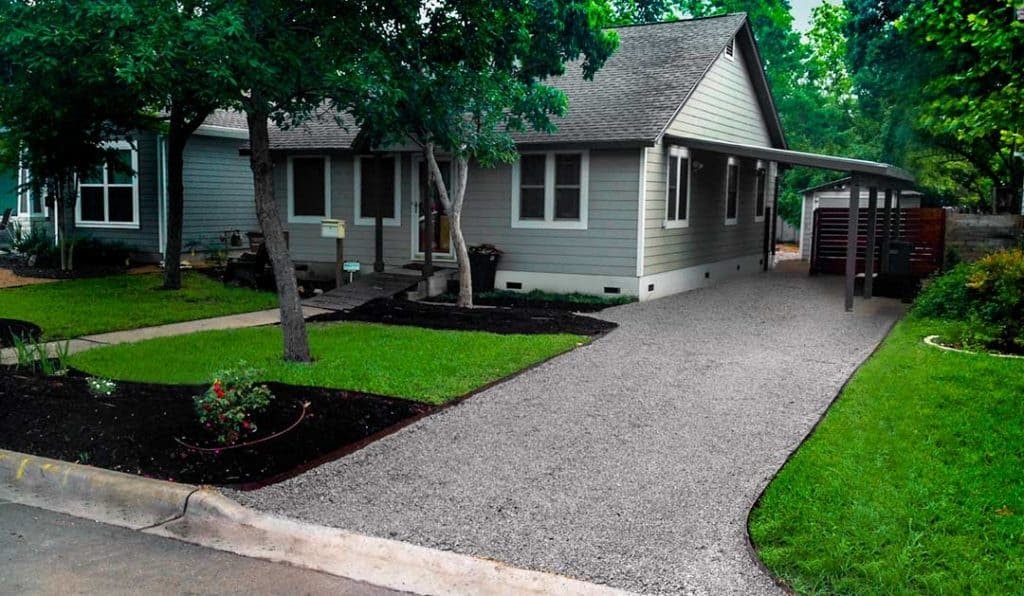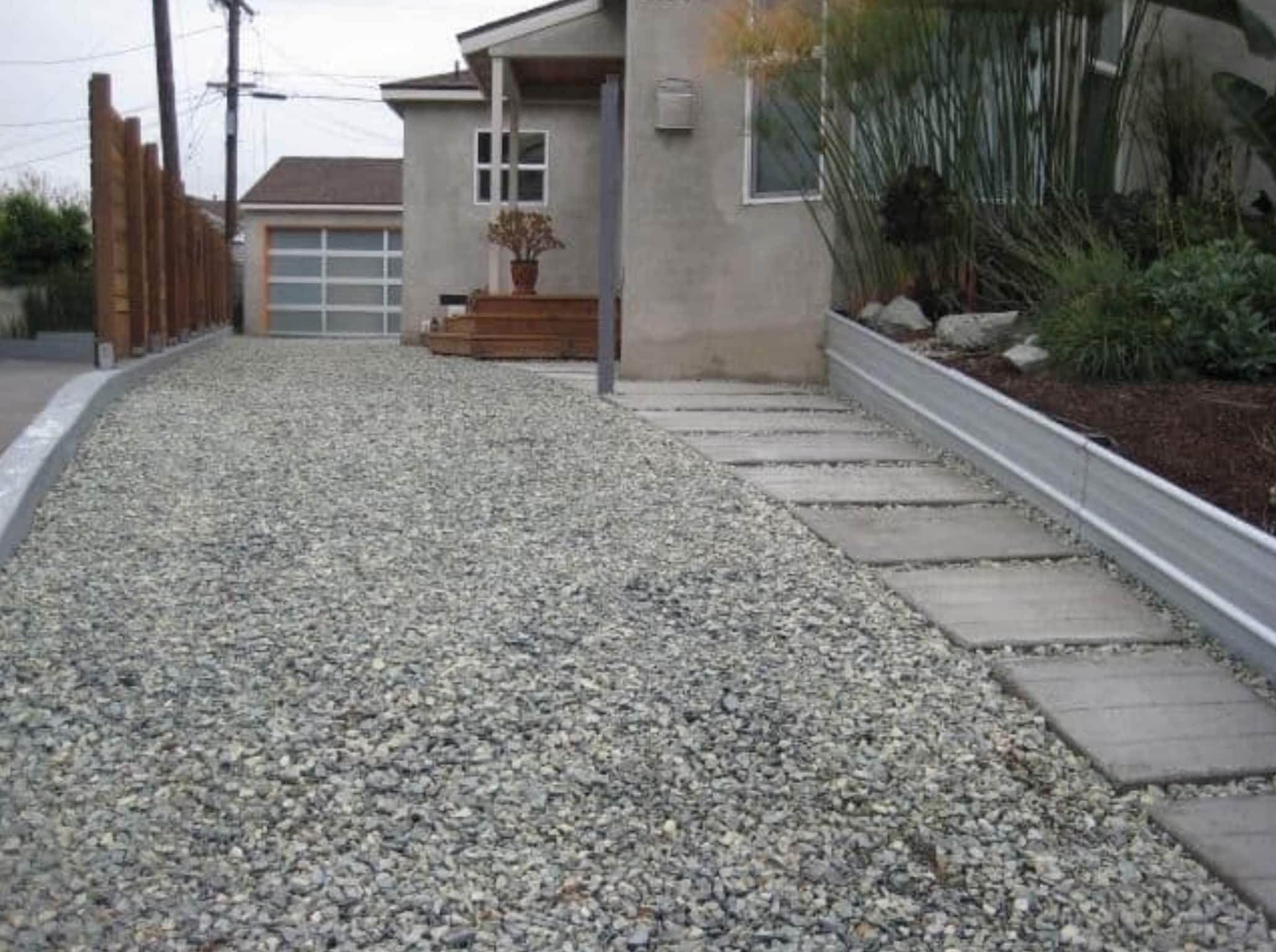To make pea gravel solid, use a stabilizing grid or mat to hold the gravel in place. You can also compact the gravel layer and add a binding agent for extra stability.
Pea gravel is a popular choice for driveways, pathways, and landscaping due to its natural appearance and drainage properties. However, loose gravel can shift and create uneven surfaces over time. Solidifying pea gravel not only enhances its functionality but also improves aesthetics.

Credit: gardenerofgoodandevil.wordpress.com
By following specific techniques, you can create a durable and attractive surface that withstands heavy foot and vehicle traffic. This guide explores effective methods to achieve a solid pea gravel installation, ensuring long-lasting results that blend seamlessly into your outdoor spaces. Embrace the beauty of pea gravel while maintaining its integrity.
How to Make Pea Gravel Solid : Step by Step Guide
Introduction To Pea Gravel
Pea gravel is a popular choice for landscaping and outdoor spaces. It consists of small, rounded stones. These stones are usually between 1/8 to 3/8 inches in size. This material is versatile and easy to work with.
The Basics Of Pea Gravel
Pea gravel is made from natural stone. It is often used for paths, driveways, and gardens. Here are some key features:
- Color Variety: Available in many colors.
- Natural Texture: Soft underfoot and visually appealing.
- Drainage: Excellent drainage properties.
Benefits For Your Outdoor Space
Using pea gravel in your yard offers many advantages:
| Benefit | Description |
|---|---|
| Low Maintenance: | Requires minimal upkeep and upkeep. |
| Cost-Effective: | Affordable compared to other materials. |
| Environmentally Friendly: | Natural material, safe for plants and wildlife. |
| Versatile Uses: | Great for pathways, patios, and gardens. |
Pea gravel enhances the beauty of any outdoor area. It adds charm while offering practicality. This material is a smart choice for homeowners.
Preparation Is Key
Preparing the area before laying down pea gravel is crucial. Proper preparation ensures a solid and long-lasting surface. Follow these steps to achieve the best results.
Evaluating The Area
Start by assessing the area where you plan to lay pea gravel. Consider these points:
- Check for drainage issues.
- Identify any roots or rocks.
- Measure the dimensions of the space.
Use a measuring tape to get accurate measurements. Mark the area with stakes and string. This helps visualize the layout. Ensure the area is level and clear of debris.
Gathering Necessary Materials
Collect all essential materials for the project. Below is a list of items you will need:
| Material | Purpose |
|---|---|
| Pea Gravel | Main material for the surface. |
| Landscape Fabric | Prevents weed growth. |
| Edging Material | Holds gravel in place. |
| Shovel | To spread the gravel. |
| Rake | To level the surface. |
Gather tools like a shovel, rake, and wheelbarrow. Having everything ready saves time.
Laying The Foundation
Creating a solid base is crucial for your pea gravel project. A well-prepared foundation ensures the gravel stays in place and looks great. Follow these steps to lay a strong foundation.
Clearing And Leveling The Ground
Start by clearing the area where you want to place the pea gravel. Remove any debris, rocks, or grass. This helps create a clean surface.
- Use a shovel or rake to clear the area.
- Ensure the ground is flat and even.
- Check for any low spots or dips.
Next, level the ground. This step is vital for preventing water pooling. Use a level tool or straight edge to check your progress.
- Identify high spots and level them down.
- Fill low spots with soil or sand.
- Compact the ground to create a solid base.
Installing A Weed Barrier
A weed barrier is essential for keeping unwanted plants away. This material prevents weeds from growing through your gravel.
Follow these steps to install a weed barrier:
- Choose a high-quality weed barrier fabric.
- Cut the fabric to fit your gravel area.
- Lay the fabric over the leveled ground.
Secure the edges with landscape staples. This keeps the barrier in place. Cut slits for any plants you want to keep.
Now your foundation is ready for pea gravel. A strong base and weed barrier will enhance durability and appearance.
Choosing The Right Binder
Choosing the right binder is crucial for solidifying pea gravel. The right binder ensures durability and stability. It also affects the appearance of your project.
Types Of Binders Available
- Polyurethane: A flexible, strong option.
- Epoxy: Provides a hard, durable surface.
- Cement: Common and easy to use.
- Organic Binders: Made from natural materials.
Pros And Cons Of Each Binder
| Binder Type | Pros | Cons |
|---|---|---|
| Polyurethane |
|
|
| Epoxy |
|
|
| Cement |
|
|
| Organic Binders |
|
|
Mixing Pea Gravel And Binder
Mixing pea gravel and a binder creates a solid surface. This method is ideal for driveways, walkways, and patios. A proper mix ensures stability and durability. Follow these steps for the best results.
Creating The Perfect Mix
Start with the right proportions. A typical mix uses one part binder to three parts pea gravel. Adjust the ratio based on your project needs.
- Step 1: Measure your pea gravel.
- Step 2: Measure the binder.
- Step 3: Combine them in a large container.
Mix thoroughly. Ensure the binder evenly coats the gravel. The final mix should be wet but not too sticky. Test the consistency with your hands. It should clump together but easily break apart.
Tools Needed For Mixing
Gather these tools before you start:
| Tool | Purpose |
|---|---|
| Shovel | For mixing and transferring materials. |
| Wheelbarrow | For transporting the mix. |
| Bucket | For measuring binder and gravel. |
| Gloves | To protect your hands during mixing. |
Ensure you have enough space for mixing. A clean, flat area works best. Follow safety precautions to avoid accidents.

Credit: www.truegridpaver.com
Application Techniques
To make pea gravel solid, use the right application techniques. Proper methods ensure a stable, long-lasting surface. Follow these steps for the best results.
Spreading The Mixture
Start by preparing your area. Remove any debris or vegetation. Here are the steps to spread the mixture:
- Gather your pea gravel and a shovel.
- Dump the gravel in small piles.
- Use the shovel to spread it out evenly.
Keep the layer thickness between 2 to 4 inches for stability. Use a rake to smooth out the surface.
Ensuring Even Coverage
Even coverage is key for a solid surface. Follow these tips to achieve it:
- Check the depth regularly while spreading.
- Use a level to ensure an even surface.
- Revisit areas that seem uneven.
Water the gravel lightly to help it settle. This also compacts the gravel for better stability. Repeat this process until the surface feels solid.
Curing And Setting
Curing and setting are key steps to make pea gravel solid. This process ensures your gravel stays in place and provides a stable surface. Understanding how to cure and set your gravel correctly can enhance durability and aesthetics.
Time Required For Curing
The time needed for curing pea gravel varies based on several factors:
- Weather conditions: Hot or dry weather speeds up curing.
- Thickness of the layer: Thicker layers take longer to cure.
- Type of binding agent: Some agents cure faster than others.
Typically, curing takes anywhere from 24 hours to several days. It’s crucial to wait until the mixture is fully set before using the area.
Tips To Speed Up The Process
Speeding up the curing process can save time. Here are some effective tips:
- Use a fast-setting binding agent: Some products cure quicker.
- Keep the area warm: Warm temperatures help speed up curing.
- Moisten the gravel: Lightly spray water to aid in curing.
- Avoid heavy traffic: Keep off the area until fully cured.
By following these tips, you can achieve a solid, stable surface in less time.

Credit: gardenerofgoodandevil.wordpress.com
Maintenance And Upkeep
Keeping your pea gravel solid requires regular maintenance. Proper upkeep ensures its appearance and functionality. A little effort goes a long way in maintaining its integrity.
Routine Maintenance Tips
- Regular Raking: Rake the surface weekly to keep it even.
- Weed Control: Remove weeds promptly to prevent growth.
- Replenish Gravel: Add fresh gravel annually to maintain depth.
- Check Edging: Inspect borders regularly to prevent spreading.
- Drainage Maintenance: Ensure proper drainage to avoid pooling.
Repairing Damaged Areas
Over time, some areas may become uneven or damaged. Repairing these spots quickly is essential for safety and aesthetics.
- Identify Problem Areas: Look for depressions or holes.
- Remove Loose Gravel: Clear away any loose or damaged gravel.
- Add Fresh Gravel: Fill in the area with new pea gravel.
- Compact the Surface: Use a tamper to compact the new gravel.
- Re-level the Area: Rake to ensure an even surface.
| Task | Frequency |
|---|---|
| Raking | Weekly |
| Weed Removal | As needed |
| Gravel Replenishment | Annually |
| Drainage Check | Monthly |
Following these tips helps keep your pea gravel surface looking great. Regular maintenance prevents larger issues in the future.
Frequently Asked Questions
How Do You Stabilize Pea Gravel?
To stabilize pea gravel, use a binding agent like polymeric sand or a gravel binder. These materials help lock the gravel in place. Additionally, compacting the gravel layer can enhance stability. Regular maintenance, like reapplying binders, will ensure your gravel remains solid over time.
Can You Use Pea Gravel For Driveways?
Yes, pea gravel can be used for driveways. It provides excellent drainage and a natural look. However, it may require a proper edging to keep the gravel in place. Regular maintenance like raking and compacting can help maintain its appearance and functionality.
What Is The Best Depth For Pea Gravel?
The ideal depth for pea gravel is about 3 to 4 inches. This depth allows for adequate drainage while preventing weeds from growing. Ensure a solid base underneath for stability. Adjust the depth based on the intended use, such as pathways or landscaping.
How Do You Maintain Pea Gravel?
To maintain pea gravel, regularly rake the surface to keep it even. Remove debris and weeds to prevent growth. You may need to replenish gravel every few years. Compacting the gravel periodically will also help maintain its integrity and appearance.
Conclusion
Achieving a solid pea gravel surface is both practical and rewarding. By following the right techniques, you can enhance stability and minimize maintenance. This versatile material offers a beautiful, durable solution for landscaping and pathways. Embrace these methods to enjoy a long-lasting, attractive outdoor space that meets your needs.

